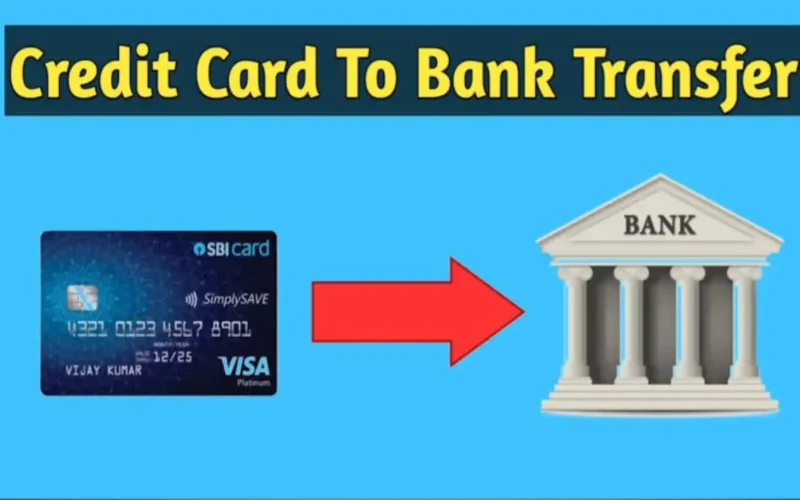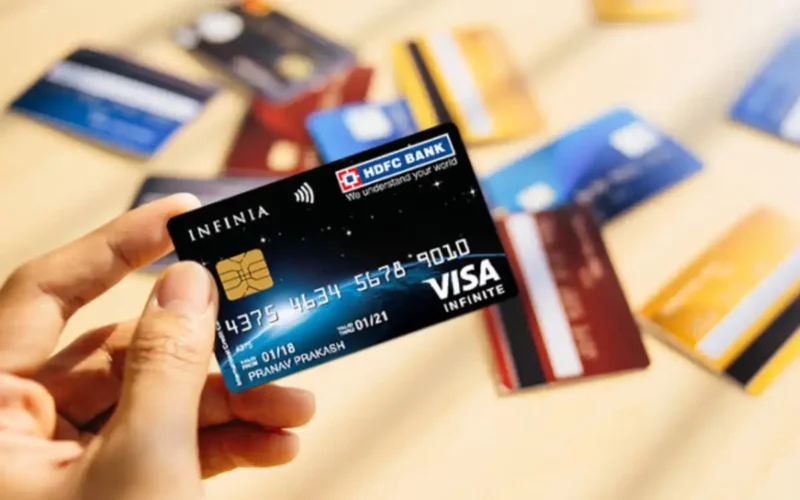Welcome, dear readers, to an insightful journey into the world of debt transfer credit cards. Are you grappling with mounting credit card balances and high-interest rates? Fret not, for I am here to shed light on the best solution for your financial predicament. In this comprehensive guide, we will explore the definition, importance, and enticing benefits of debt transfer credit cards, empowering you to make informed decisions and take control of your financial well-being.
Mục lục

A. Definition and importance of debt transfer credit cards
Let’s start by unraveling the essence of debt transfer credit cards. Simply put, these cards allow you to transfer your existing credit card balances onto a new card, typically with a lower interest rate or even a 0% introductory APR period. This enables you to consolidate your debts into a single account, potentially saving you a significant amount of money in interest payments.
Now, you might wonder, why are debt transfer credit cards so crucial? Well, my friend, they offer a lifeline for those burdened by hefty credit card balances. By transferring your debts to a new card with better terms, you can potentially reduce your interest payments, save money, and expedite your journey towards financial freedom.
B. Benefits of using debt transfer credit cards
Ah, the allure of debt transfer credit cards is irresistible, and for good reason! Let’s explore the enticing benefits that await you:
- Lower Interest Rates: Debt transfer credit cards often come with lower interest rates than your existing cards, allowing you to save money on interest payments and accelerate your debt repayment.
- 0% APR Period: Some cards offer an introductory 0% APR period, giving you a breather from interest charges and an opportunity to make significant progress in paying off your debts.
- Simplified Finances: Consolidating your debts onto a single card simplifies your financial management, with just one payment to make each month.
- Potential Rewards: Certain debt transfer credit cards even offer rewards programs, allowing you to earn cashback, points, or other perks while you pay off your debts.
Now that we’ve set the stage, it’s time to delve deeper into the intricacies of choosing the best debt transfer credit cards. So, my dear reader, join me in the next section as we unlock the secrets to finding your financial oasis.
How to Choose the Best Debt Transfer Credit Cards

Are you ready to embark on a quest to find the perfect debt transfer credit card tailored to your financial needs? In this section, we will equip you with the knowledge and tools to navigate the vast sea of options and make an informed decision. Let’s dive in!
A. Understanding the features and terms
Before you embark on your debt transfer credit card journey, it’s crucial to grasp the various features and terms associated with these cards. Familiarize yourself with the following aspects:
- Credit Limit: Consider the maximum amount you can transfer onto the card, ensuring it will accommodate your existing debts.
- Introductory Period: Take note of the length of the 0% APR period, as this determines how long you’ll enjoy interest-free payments.
- Balance Transfer Fees: Some cards charge a fee for transferring balances, so be sure to compare and choose cards with reasonable or even zero balance transfer fees.
- Annual Percentage Rate (APR): Understand the interest rate that will apply once the introductory period ends. Aim for a card with a competitive and manageable APR.
B. Assessing interest rates and fees
When selecting a debt transfer credit card, the interest rates and fees play a pivotal role in your financial journey. Consider the following factors:
- Balance Transfer Interest Rate: Look for cards with low or 0% interest rates during the introductory period. This will allow you to make significant progress in paying off your debts without accruing additional interest.
- Regular APR: Once the introductory period ends, the regular APR will come into play. Ensure it is reasonable and aligned with your financial goals.
- Annual Fees: Some cards may charge an annual fee, so weigh the fee against the benefits and potential savings you’ll gain from the card.
C. Considering promotional offers and rewards programs
Why settle for less when you can reap additional benefits from your debt transfer credit card? Consider the following promotional offers and rewards programs:
- Sign-Up Bonuses: Look for cards that offer enticing sign-up bonuses, such as cashback rewards or bonus points upon account activation.
- Rewards Programs: Some cards offer rewards programs that allow you to earn points or cashback on your purchases. Assess the rewards structure and determine if it aligns with your spending habits and financial goals.
- Additional Perks: Explore any additional perks or benefits offered by the card, such as travel insurance, purchase protection, or extended warranties.
Armed with this knowledge, you are now equipped to compare and select the best debt transfer credit card for your financial journey. In the next section, we will delve into the top factors to consider when evaluating different cards, ensuring you make a well-informed choice. Stay tuned, my friend!
Top Factors to Consider When Comparing Debt Transfer Credit Cards

When it comes to choosing the best debt transfer credit card, my friend, it’s essential to consider various factors that can significantly impact your financial journey. Let’s dive into the top considerations that will guide you towards making a wise and informed decision.
A. Length of introductory 0% APR period
One of the most critical factors to evaluate is the length of the introductory 0% APR period offered by the credit card. This period signifies how long you’ll enjoy a reprieve from interest charges on your transferred balances. Longer periods provide you with more time to pay off your debts without accruing additional interest. So, look for cards that offer substantial 0% APR periods that align with your repayment goals.
B. Balance transfer fees
While debt transfer credit cards can be a game-changer in reducing your interest payments, it’s crucial to consider the associated balance transfer fees. Some cards charge a percentage of the transferred balance or a flat fee. Take a moment to assess these fees and ensure they don’t outweigh the potential savings from the lower interest rates. Look for cards with reasonable or even waived balance transfer fees to maximize your savings.
C. Annual fees and other charges
Next on our checklist are the annual fees and other charges that may accompany the credit card. Some cards have no annual fees, while others may charge a modest amount. It’s essential to weigh the benefits of the card against any fees to determine if the potential savings outweigh the costs. Additionally, keep an eye out for other charges, such as foreign transaction fees or late payment fees, which can impact your overall financial strategy.
D. Credit limit and eligibility requirements
Before diving headfirst into the world of debt transfer credit cards, consider the credit limit and eligibility requirements of each card. Some cards may have higher credit limits, allowing you to transfer larger balances, while others may have more lenient eligibility criteria. Take a moment to assess your creditworthiness and ensure you meet the requirements of the card you’re considering to avoid any disappointments or rejections.
With these top factors in mind, my friend, you’re equipped with the knowledge to navigate the vast sea of debt transfer credit cards. But hold on tight, for the next section awaits, unveiling a detailed review of the best cards available in the market. Are you ready to embark on this enlightening journey? Let’s dive in together!
Review of the Best Debt Transfer Credit Cards in the Market

Now that we understand the significance of debt transfer credit cards, it’s time to explore the top contenders in the market. Here, I present to you three remarkable cards that have garnered widespread acclaim for their features, benefits, and limitations. Let’s dive right in!
A. Card 1: Features, Benefits, and Limitations
Card 1, known for its stellar reputation, offers a range of enticing features that make it a top choice for those seeking to transfer their debts. With a generous introductory 0% APR period of 18 months, this card provides a significant window of opportunity to pay off your balances interest-free. Additionally, its balance transfer fee is relatively low, ensuring you don’t incur exorbitant charges during the transfer process.
Furthermore, Card 1 boasts a user-friendly online platform, allowing you to conveniently manage your account and track your progress towards debt freedom. However, it’s important to note that this card may have an annual fee, so be sure to weigh the benefits against the cost to determine if it aligns with your financial goals.
B. Card 2: Features, Benefits, and Limitations
Moving on to Card 2, this gem offers a compelling suite of features designed to save you money and streamline your debt repayment journey. With an impressive 0% APR introductory period of 15 months, you have ample time to make significant strides in paying down your balances without accruing additional interest.
Card 2 also stands out with its competitive balance transfer fee, which minimizes the financial burden associated with moving your debts. Moreover, this card’s rewards program adds a delightful twist to your debt repayment journey, allowing you to earn cashback or other perks as you work towards achieving financial freedom. However, do keep in mind that Card 2 may have certain eligibility requirements, so review them carefully before applying.
C. Card 3: Features, Benefits, and Limitations
Last but certainly not least, we have Card 3, a formidable contender in the realm of debt transfer credit cards. Boasting a robust introductory 0% APR period of 12 months, this card offers a respectable window of interest-free payments, providing you with the opportunity to make significant headway in your debt repayment journey.
Card 3 also shines with its competitive balance transfer fees, ensuring that you don’t incur excessive charges during the transfer process. However, it’s worth noting that this card may have certain limitations, such as a lower credit limit or stricter eligibility criteria. Therefore, carefully review the terms and conditions to determine if it aligns with your specific needs and financial circumstances.
With these three outstanding options at your disposal, it’s time to weigh the features, benefits, and limitations against your individual requirements and embark on your path towards financial freedom. Remember, dear reader, knowledge is power, and armed with the right information, you can make an informed decision that propels you towards a debt-free future.
Tips for Maximizing the Benefits of Debt Transfer Credit Cards

When it comes to harnessing the full power of debt transfer credit cards, a strategic approach is key. Let’s explore some invaluable tips that will help you make the most of these financial tools and pave your path to debt-free glory.
A. Creating a Repayment Plan
To embark on your debt-free journey, it’s essential to create a solid repayment plan. Start by assessing your current financial situation and determining how much you can allocate towards debt repayment each month. Consider your income, expenses, and other financial obligations, and aim to make consistent, timely payments to avoid any setbacks.
You might consider the snowball method or the avalanche method to tackle your debts. The snowball method involves prioritizing the smallest debt first and gradually moving on to larger ones, providing a psychological boost as you eliminate individual debts. On the other hand, the avalanche method focuses on tackling debts with the highest interest rates first, minimizing the overall interest you’ll pay in the long run.
B. Utilizing the 0% APR Period Effectively
Ah, the alluring 0% APR period! This golden opportunity can be a game-changer if utilized wisely. During this period, no interest will accrue on your transferred balance, enabling you to make significant progress towards paying off your debts. Here’s how to make the most of it:
- Pay More Than the Minimum: While the minimum payment may seem enticing during the 0% APR period, remember that it won’t make much of a dent in your overall balance. Aim to pay as much as you comfortably can each month to expedite your debt repayment journey.
- Set Up Automatic Payments: Avoid the risk of missing payments and potentially losing your 0% APR benefit by setting up automatic payments. This ensures that your payments are made on time, safeguarding your progress.
- Avoid New Purchases: As tempting as it may be, refrain from making new purchases on your debt transfer credit card during the 0% APR period. Focus solely on paying off your existing debt to maximize the benefits.
C. Avoiding Common Pitfalls and Mistakes
While debt transfer credit cards offer a lifeline, it’s essential to tread carefully and avoid common pitfalls that can hinder your progress. Here are a few key pitfalls to steer clear of:
- Missing Payments: Late or missed payments can result in penalty fees and even the loss of your promotional APR. Stay vigilant and ensure you make your payments on time each month.
- Ignoring the Fine Print: Thoroughly read the terms and conditions of your debt transfer credit card to understand any potential fees, limitations, or restrictions. Knowledge is power, my friend!
- Racking Up New Debt: Be mindful of your spending habits and avoid accumulating new debts while you’re in the process of paying off your transferred balance. Stay focused on your goal to achieve financial freedom.
With these invaluable tips, you’re now equipped to make the most of your debt transfer credit card. But wait, dear reader, there’s still more to uncover! Join me in the next section as we review the best debt transfer credit cards available in the market.
Conclusion

In conclusion, selecting the best debt transfer credit cards can be a game-changer for your financial well-being. By understanding the features, comparing important factors, and reviewing the top options available, you can make an informed decision that aligns with your goals and circumstances. Remember, it’s not just about finding a card with a long introductory 0% APR period, but also considering balance transfer fees, annual fees, credit limits, and eligibility requirements.
To maximize the benefits of these credit cards, it’s crucial to create a repayment plan that suits your budget and goals. Take advantage of the 0% APR period by making consistent and larger payments towards your debt. Avoid common pitfalls and mistakes, such as accruing new debt or missing payments, which could negatively impact your progress.
At erp.ebest.vn, we understand the importance of selecting the right financial tools to enhance your financial stability. That’s why we encourage you to explore the world of debt transfer credit cards and empower yourself with the knowledge to make wise choices. Remember, finding the best debt transfer credit card can be a stepping stone towards a debt-free future.
So, my dear reader, embark on this journey with confidence, armed with the information and insights you’ve gained here. Take control of your finances and let the best debt transfer credit card guide you towards a brighter, more secure future. Until next time, keep striving for financial freedom!